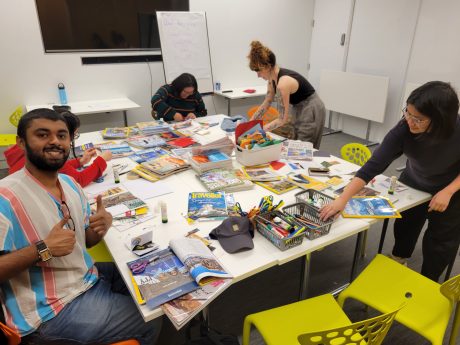
Publishing has always fascinated me — not just as a writer trying to get work out into the world, but as a teacher striving to help others develop their voices. Over the past few years, it’s become increasingly clear to me that the publishing industry is not merely a destination for finished writing, but a pedagogical tool in itself — a way of learning, reflecting, collaborating, and transforming.
This series of articles, gathered under the umbrella of The Publishing Industry, is the result of that thinking.
It draws upon my experience running the MA in Creative Writing and Education at Goldsmiths, and decades spent teaching, writing, and editing. These articles are not just resources — they’re provocations and frameworks for anyone interested in how publishing intersects with creativity, learning, and social change.
If you’re a writer, teacher, or writer-teacher looking to deepen your understanding of publishing as both practice and pedagogy, I hope you’ll find something useful here.
🧭 How to Use These Articles: A Suggested Reading Order
This is not a linear textbook. But if you’re looking for a way to navigate the ideas, I’d recommend the following progression:
1. Start with the Big Picture

To grasp the ecosystem of publishing today, these articles offer vital historical and structural context:
- The History of Publishing in 7 Objects
“Publishing, in one form or another, began in the Paleolithic.”
An evocative overview of how human expression evolved into the publishing industry we now navigate. - How Can Writers Benefit from Learning About the Publishing Industry?
Explores how market awareness, submission strategies, and editorial collaboration shape creative possibility. - Towards a Methodology for Creative Writing Educators
“Publishing should be considered an art of access, where process matters more than product.”
2. Reflect on the Writer’s Experience

If you’re a writer or teaching writers, the following pieces speak directly to the lived experience of publishing:
- In What Ways Can Publishing Support Writers’ Emotional Needs?
A powerful reflection on how publication — or the lack of it — affects identity, healing, and hope. - The Perils and Pleasures of Creative Writing Competitions
A candid look at how prizes can motivate, distort, or devastate writer-teachers.
3. Consider Publishing as a Teaching Tool

These articles explore how publishing can be used to build confidence, community, and criticality in the classroom:
- Learning to Write, Publish and Teach All in One Go
“We must embrace the messiness of trying to learn, write, and publish simultaneously.” - Using Publishing Tools to Create Thriving Writing Communities
“Publishing is more than just getting a book on the shelves—it’s about creating a community.”
4. Explore Digital and Decolonial Frontiers

Finally, widen your lens and consider how digital tools and decolonial perspectives challenge and enrich publishing practice:
- Digital Storytelling, Translation and Publishing
A survey of how tech, translation, and transformation shape contemporary publishing cultures. - Five Lessons About The Outsiders and Publishing
An inspiring case study of youth voice, literary success, and cultural impact. - Creative Writers and Marketing
Think about visibility, metrics, and the politics of “platform.”
💡 Why This Matters
Publishing isn’t just an end-point. It’s a process — one that can teach us, and our students, about audience, agency, structure, emotion, politics, and power.
When we treat publishing as pedagogy, we open up opportunities for all learners — not just to be heard, but to learn how systems work, and how to change them.
These articles are just a starting point. If you’re curious to delve deeper — or to join a community of practitioners exploring these ideas in real time — take a look at the MA in Creative Writing and Education at Goldsmiths.
Let’s keep writing, teaching, and publishing — mindfully.
Francis Gilbert
Head of MA Creative Writing and Education
Author of The Mindful English Teacher, I’m a Teacher, Get Me Out of Here!, and more


Leave a Reply